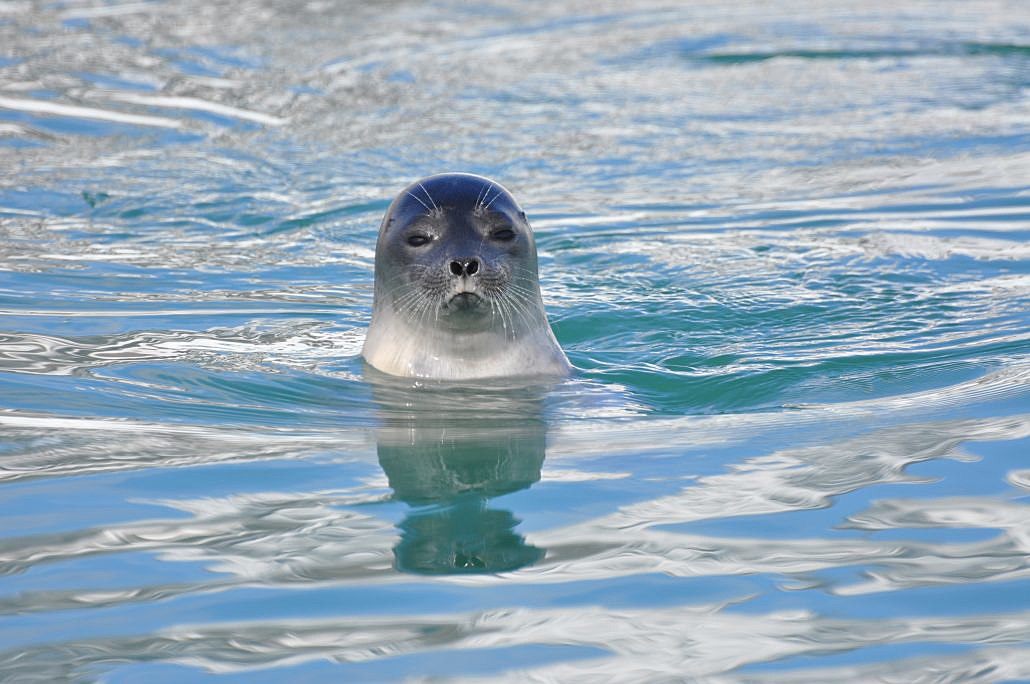
The ringed seal (Pusa[1] hispida or Phoca hispida[1]), also known as the jar seal and as netsik or nattiq by the Inuit, is an earless seal (family: Phocidae) inhabiting the Arctic and sub-Arctic
regions. The ringed seal is a relatively small seal, rarely greater
than 1.5 m in length, with a distinctive patterning of dark spots
surrounded by light grey rings, hence its common name. It is the most
abundant and wide-ranging ice seal in the Northern Hemisphere: ranging throughout the Arctic Ocean, into the Bering Sea and Okhotsk Sea as far south as the northern coast of Japan in the Pacific, and throughout the North Atlantic coasts of Greenland and Scandinavia as far south as Newfoundland, and include two freshwater subspecies in northern Europe. Ringed seals are one of the primary prey of polar bears and killer whales, and have long been a component of the diet of indigenous people of the Arctic.
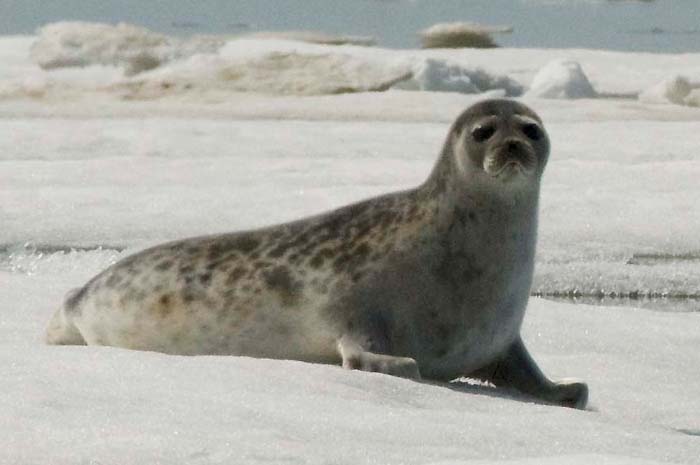
Description
Taxonomy and phylogeny

The
taxonomy of ringed seal has been much debated and revised in the
literature. Due to its wide range, as many as ten subspecies have been
described.[5] Currently, five distinct subspecies are recognized: P. h. hispida in the Arctic Ocean and Bering Sea, P. h. ochotensis in the Sea of Okhotsk, P. h. saimensis in Lake Saimaa in Finland, P. h. ladogensis in nearby Lake Ladoga in Russia and P.h. botnica in the Gulf of Bothnia.[2] The ringed seal is most closely related to the Caspian seal (P. caspica) and Baikal seal (P. sibirica), all of which share similar small sizes, features of skull morphology and affinity for ice.[2]
The closest phylogenetic relatives to the ringed seal are the grey seal (Halichoerus grypus) and the species in the genus Phoca (harbor seal and largha seal), to which the ringed seals were formerly attributed.[6] Together with the remaining northern latitude ice seals (ribbon seal, bearded seal, harp seal and hooded seal), these seals constitute the subfamily Phocinae.[6]
Range and habitat
Ringed seals occur throughout the Arctic Ocean. They can be found in the Baltic Sea, the Bering Sea and the Hudson Bay. They prefer to rest on ice floe and will move farther north for denser ice. Two subspecies can be found in freshwater.
Ringed seals have a circumpolar distribution from approximately
35°N to the North Pole, occurring in all seas of the Arctic Ocean. In
the North Pacific, they are found in the southern Bering Sea and range
as far south as the seas of Okhotsk and Japan. Throughout their range,
ringed seals have an affinity for ice-covered waters and are well
adapted to occupying seasonal and permanent ice. They tend to prefer
large floes (i.e., > 48 m in diameter) and are often found in the
interior ice pack where the sea ice coverage is greater than 90%. They
remain in contact with ice most of the year and pup on the ice in late
winter-early spring.[7]
Distribution in Alaska:
Ringed seals are found throughout the Beaufort, Chukchi, and Bering
Seas, as far south as Bristol Bay in years of extensive ice coverage.
During late April through June, ringed seals are distributed throughout
their range from the southern ice edge
northward. Preliminary results from recent surveys conducted in the
Chukchi Sea in May–June 1999 and 2000 indicate that ringed seal density
is higher in nearshore fast and pack ice, and lower in offshore pack
ice. Results of surveys conducted by Frost and Lowry (1999) indicate
that, in the Alaskan
Beaufort Sea, the density of ringed seals in May–June is higher to the
east than to the west of Flaxman Island. The overall winter distribution
is probably similar, and it is believed there is a net movement of
seals northward with the ice edge in late spring and summer. Thus,
ringed seals occupying the Bering and southern Chukchi seas in winter
apparently are migratory, but details of their movements are unknown.[7]
Ringed seals reside in arctic waters and are commonly associated with ice floes and pack ice.[4] The ringed seal maintains a breathing hole in the ice thus allowing it to use ice habitat that other seals cannot.
Life history
Females usually begin mating in late April.[4] Males will roam the ice for a mate. When found, the male and female may spend several days together before mating. Then the male looks for another mate.
Ringed seals live about 25 to 30 years.[4] They are solitary animals and when hauled out on ice separate themselves from each other by hundreds of yards.[4]
Diet
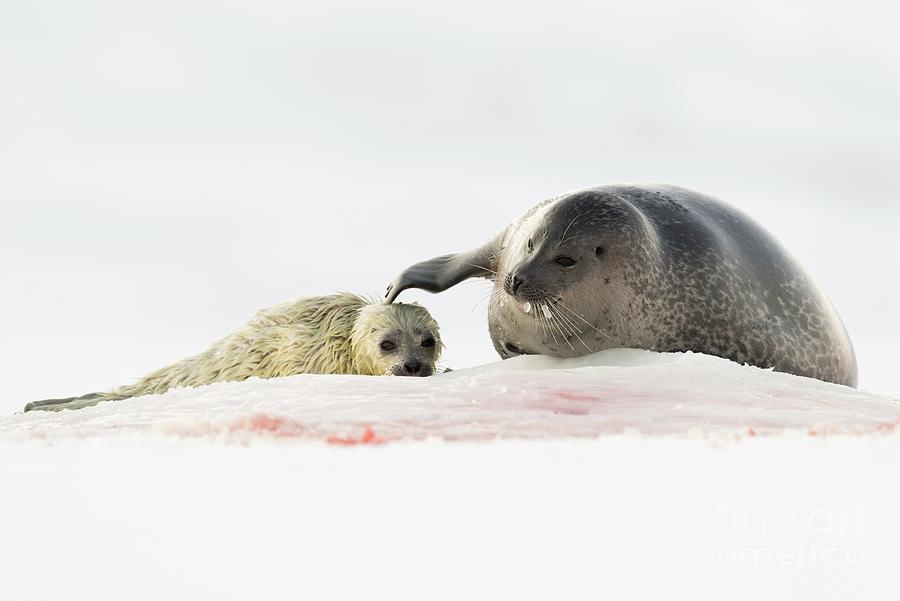
Ringed seals
eat a wide variety of small prey that consists of 72 species of fish and
invertebrates. Feeding is usually a solitary behavior and their prey of
choice includes mysids, shrimp, arctic cod, and herring. While feeding, ringed seals dive to depths of 35 to 150 ft (11 to 46 m).[4] In the summer ringed seals feed along edge of the sea-ice for polar cod. In shallow water they feed on smaller cod. Ringed seals may also eat herring, smelt, whitefish, sculpin, perch, and crustaceans.
Predators

Ringed seal are an important food item in particular for polar bears.[8] During the pupping season, Arctic fox and glaucous gulls take ringed seal pups born outside lairs while killer whales, Greenland sharks and occasionally Atlantic walruses prey upon them in the water.[9]
Human interactions
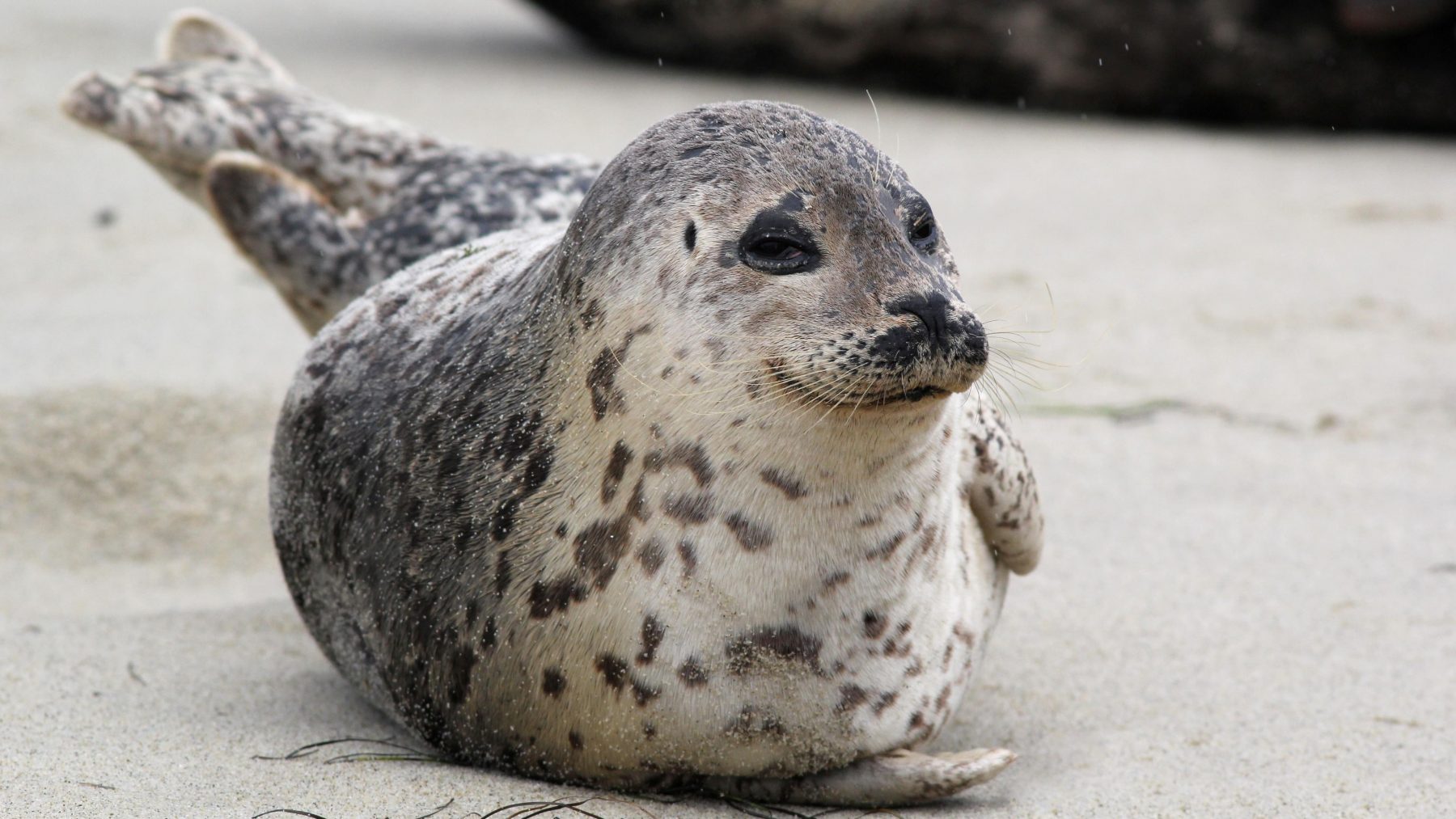
Ringed seals have long been an important component of the diet of Arctic indigenous peoples throughout their range, and continue to be harvested annually by many communities.[4] Early Paleoeskimo sites in Arctic Canada revealed signs of harvested ringed seals dating from c. 4000–3500 BP, likely captured in frozen cracks and leads in the ice, with a selection for juveniles and young adults.[10] However, in 2012 the Government of Nunavut warned pregnant women to avoid eating the liver due to elevated levels of mercury.[11]
Bycatch in fishing gear, such as commercial trawls, is also another threat to ringed seals.[4] Climate change is potentially the most serious threat to ringed seal populations since much of their habitat is dependent upon pack ice.[4] Birthing lairs are often destroyed before the seal pup is able to forage on its own leading to poor body condition.[citation needed]
Conservation in the United States
The estimated population size for the Alaska stock of ringed seals is 249,000 animals.[4] Currently, the population trend for this stock is unknown.[4] Ringed seals are listed as a species of "least concern" by the IUCN,[1] and are considered not “threatened” under the Endangered Species Act.[7]
Reliable estimates of the minimum population, potential biological
removal, and human-caused mortality and serious injury are currently not
available.[7]
Because the potential biological removal for ringed seals is unknown,
the level of annual U.S. commercial fishery-related mortality that can
be considered insignificant and approaching zero mortality and serious
injury rate is unknown.[7] No information is available on the status of ringed seals.[7]
Due to a very low level of interactions between U.S. commercial
fisheries and ringed seals, the Alaska stock of ringed seals is not
considered a strategic stock.[7]
On March 28, 2008, the U.S. National Marine Fisheries Service initiated a status review[12] under the Endangered Species Act (ESA) to determine if listing this ice seal species under the ESA is warranted.
Subspecies
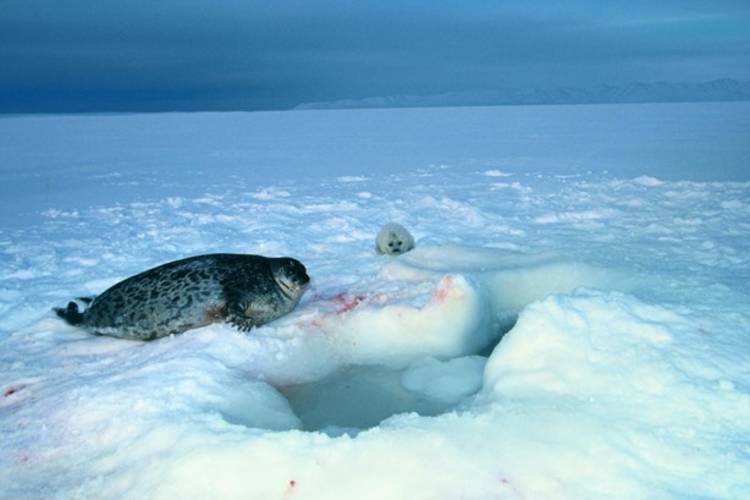
The populations living in different areas have evolved to separate subspecies, which are currently recognized as:[2]
The three last subspecies are isolated from the others, like the closely related Baikal seal and Caspian seal.
Phoca hispida



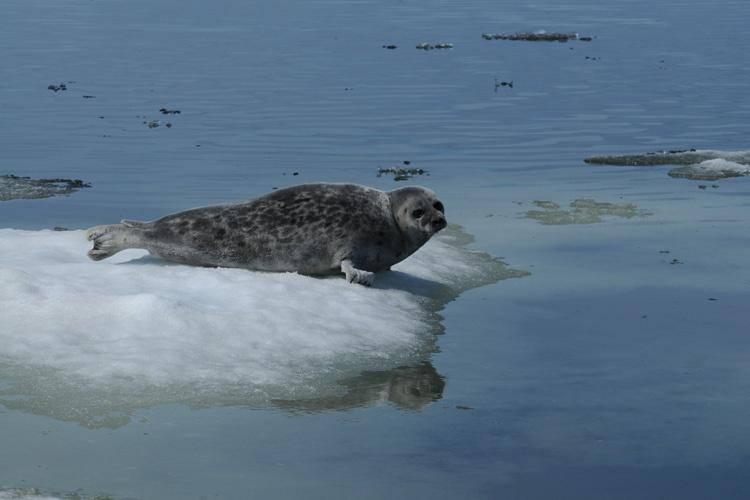
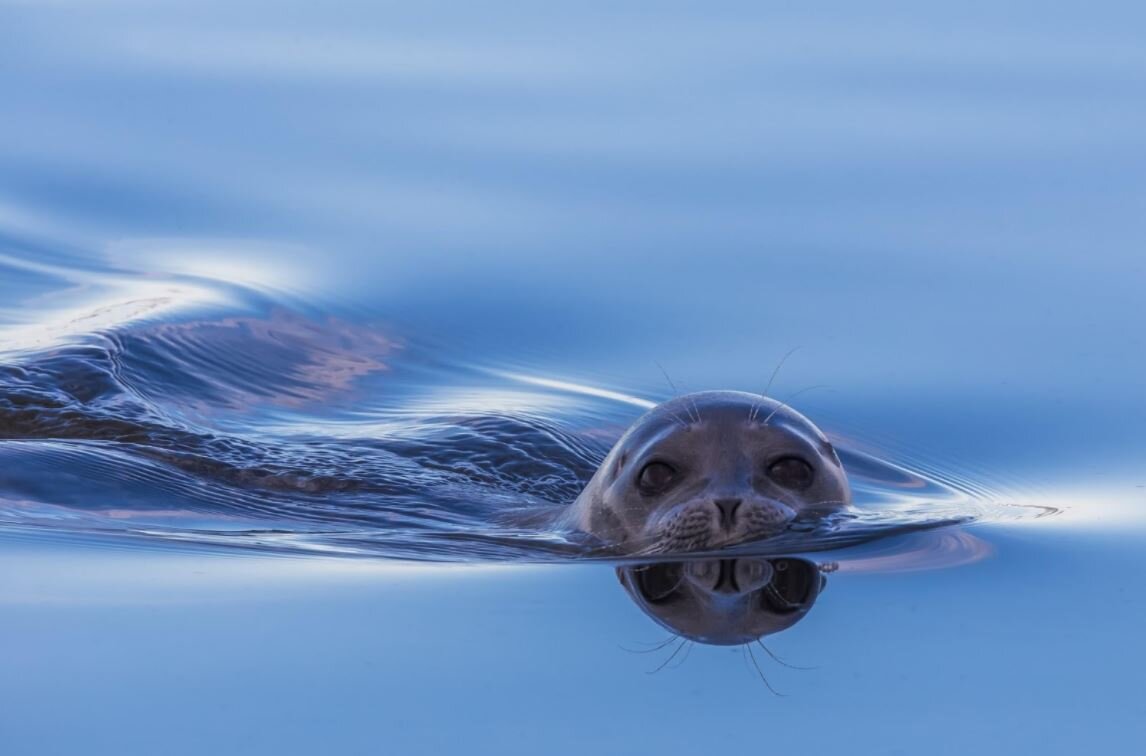
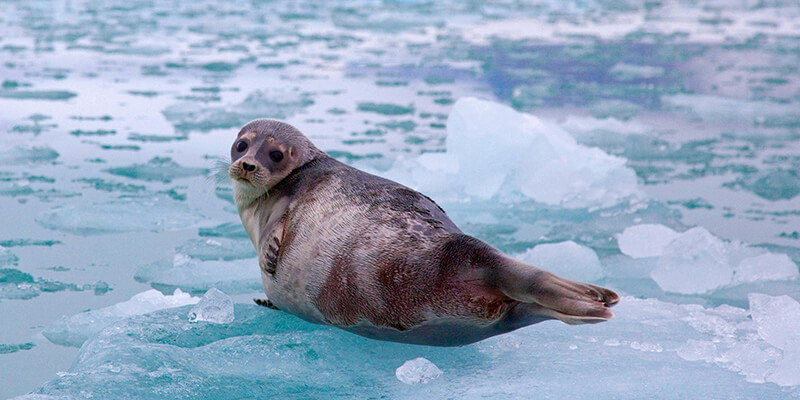
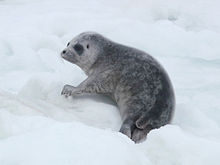
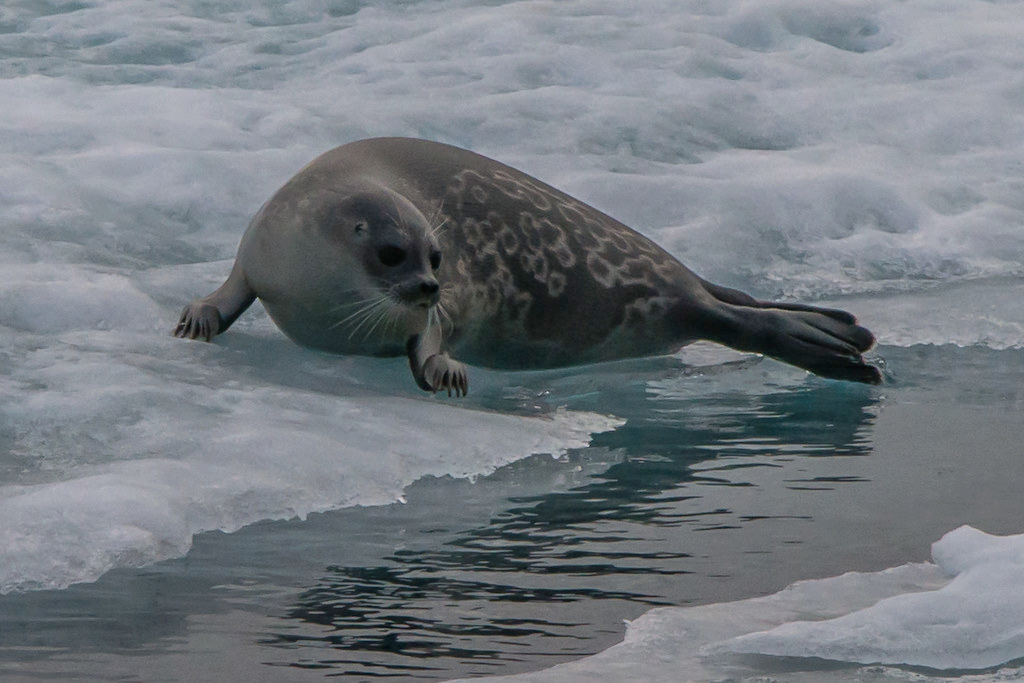






No comments:
Post a Comment
Note: Only a member of this blog may post a comment.